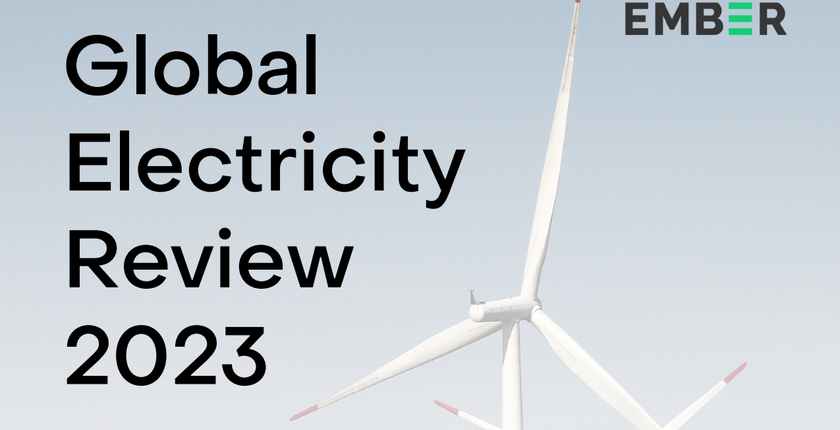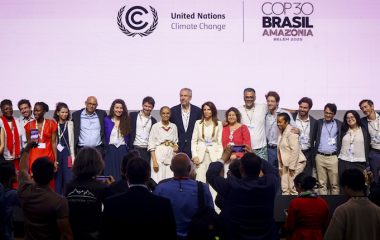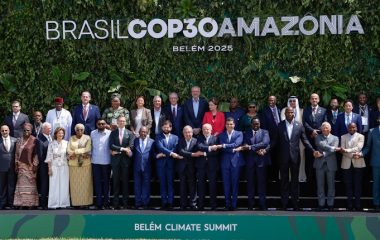
Photo: Ember
Emissions from power plants rose in 2022, but change is coming fast, according to Ember. The think tank based in London said that to limit global warming at 1.5 degrees, first the increase in demand must be met by clean electricity sources, after which they need to continue to replace fossil fuels. The combined share of solar and wind power in the electricity mix jumped almost two percentage points last year to 12.1%. It indicated that together with other clean sources they are set to cover the entire demand growth already in 2023.
There are strong signs that 2022 was a turning point in the global electricity transition, according to the authors of Ember’s Global Electricity Review. They estimated that last year marked the peak of power sector emissions, rising 1.3% to an all-time high. Of note, numerous experts and organizations earlier claimed that the emissions of greenhouse gases, primarily carbon dioxide, have peaked ahead of the coronavirus pandemic.
Electricity demand surged 2.5% to 28.5 PWh. New wind and solar power plants jointly covered 80.3% of the rise or 557 TWh. Clean power growth, including nuclear, hydro and other renewables, is likely to exceed electricity demand growth in 2023, the report reads. It would be the first time outside of a recession.
The forecast adds that this year fossil generation would slip 0.3%, with bigger falls in subsequent years. In that case, 2022 saw peak emissions.

Wind, solar grow combined share to record high 12.1%
Wind and solar reached a record share of 12.1% in global electricity demand or 1.8 percentage points more than in the previous year. The two sectors contributed 245 TWh (24%) and 312 TWh (17%) more in output, respectively, than in 2021. The totals came in at almost 2.2 PWh for wind and 1.3 PWh for photovoltaics, respectively. In comparison, hydropower advanced 1.7% to 4.3 PWh.
The fourth annual Global Electricity Review Ember presents electricity data from 2022 across 78 countries, representing 93% of global electricity demand. “In this decisive decade for the climate, it is the beginning of the end of the fossil age,” lead author Małgorzata Wiatros-Motyka said. “We are entering the clean power era.”
Nuclear power, which Ember considers a clean source, saw a historic drop in production last year
Together all clean electricity sources reached a record 39.3% of global electricity. However, coal remained the single-largest source, with 36.2%. In absolute terms, growth was stable at 1.1% to 10.2 PWh.
Nuclear power output saw a historic fall, by 4.7% to just over 2.6 PWh, which made up 9.2% of demand. The most important factor were outages and maintenance in France and closures in Germany and Belgium.
Gas power generation fell marginally, 0.2%, to 6.3 PWh, which was attributed to record-high prices. The share dropped 0.6 points to 22.2%.
Wind, photovoltaics need to cover at least 41% of electricity demand in 2030
The International Energy Agency calculated that wind and solar combined must climb to 41% of the global mix by 2030 on the path for the entire electricity sector to reach net zero emissions in 2040. It is necessary for the world to limit global warming to 1.5 degrees Celsius, it said.
In the last decade, the cost of solar and wind has declined drastically (82% and 34%, respectively) – however, the cost of coal-fired energy remained similar while the cost of nuclear-fired energy increased by 61%, the International Solar Alliance’s Director General Ajay Mathur said.
Turkey produced 50.1 TWh of wind and solar power last year, compared to 36.1 TWh for all other Southeastern European countries put together
As for the area that Balkan Green Energy News closely tracks, Turkey has the biggest combined solar and wind power output, 50.1 TWh, compared to 36.1 TWh in all the remaining countries put together. In the share category, it ranks only fourth, at 15.5%.
Greece is number one with 33.3% and the second in production, with 17.5 TWh. Croatia is in second place with a 17.1% share of wind and solar in electricity generation in 2022, or 2.4 TWh, followed by Cyprus, with 15.8% or 830 GWh, and Romania (15.7%), which was third in Southeastern Europe with an output of 8.9 TWh.
North Macedonia has the lowest share, 2.2%, and the smallest total wind and solar power production, 120 GWh, according to Ember’s data. Kosovo* is the second worst in both categories in Southeastern Europe, with 2.9% and 310 GWh, respectively.









Be the first one to comment on this article.